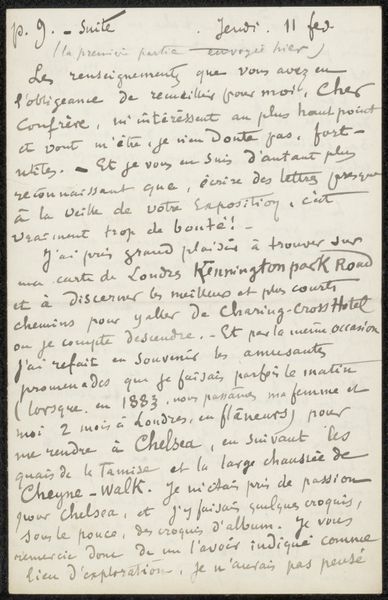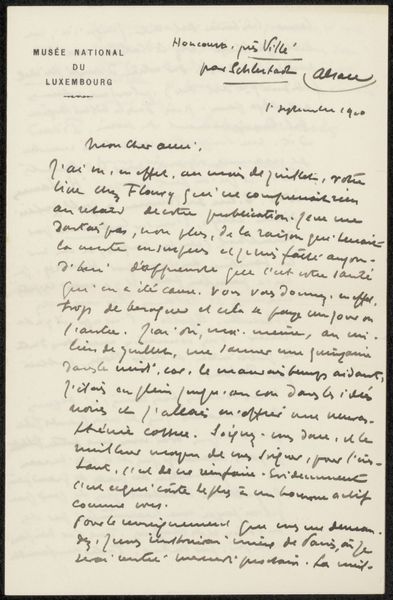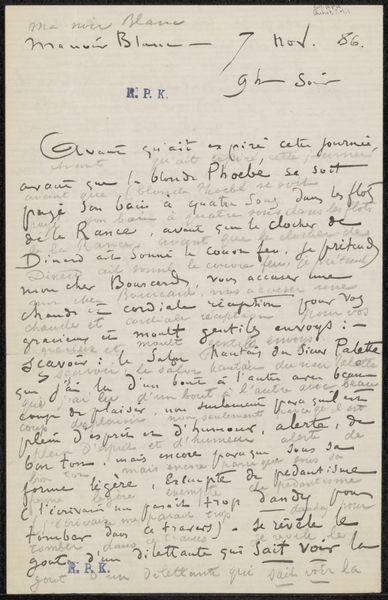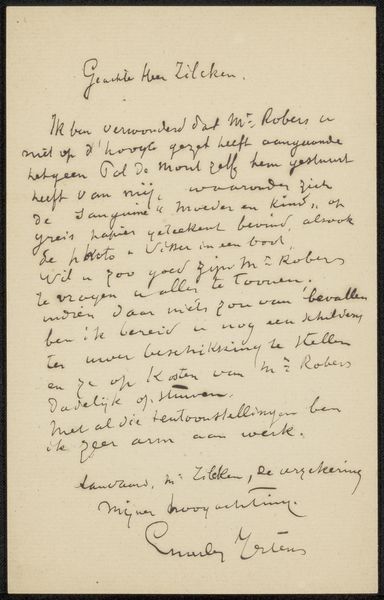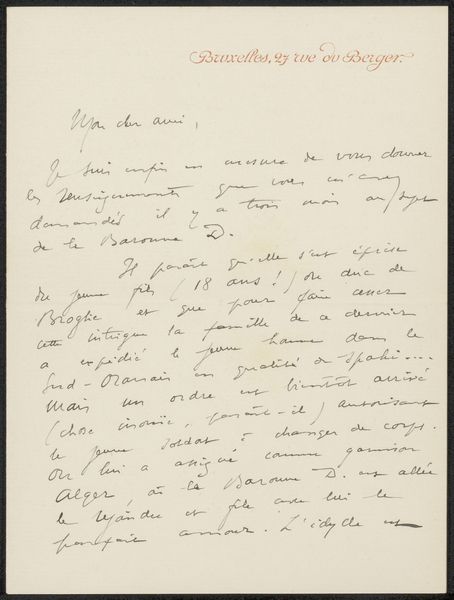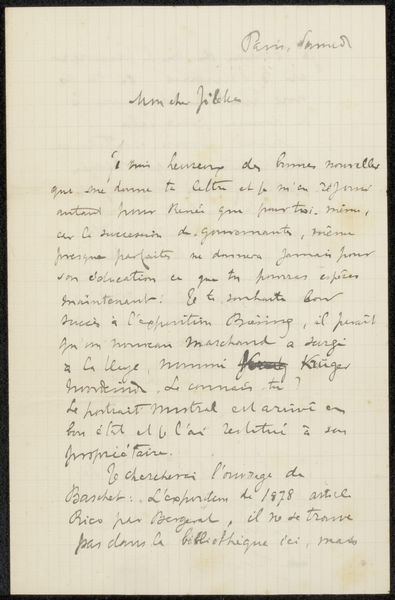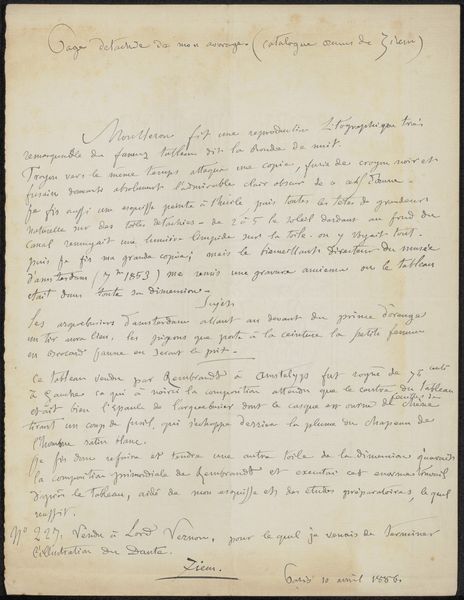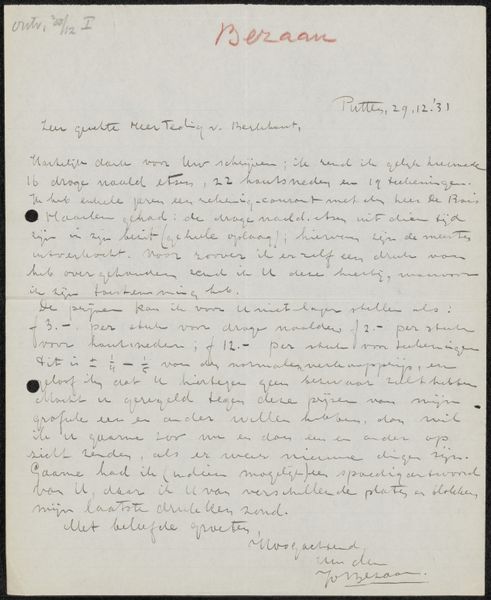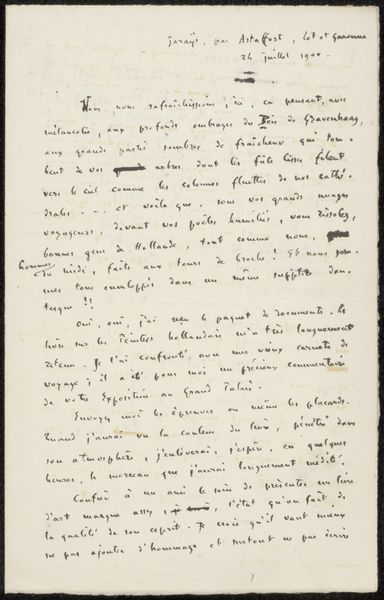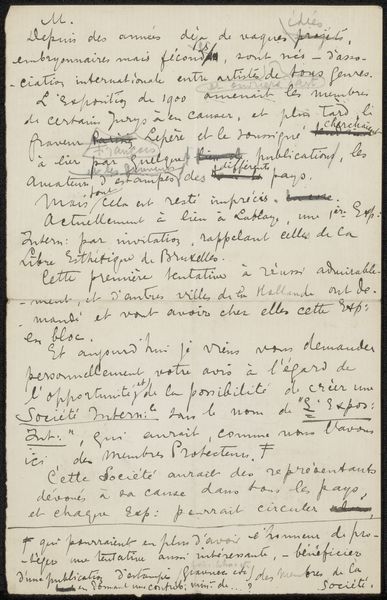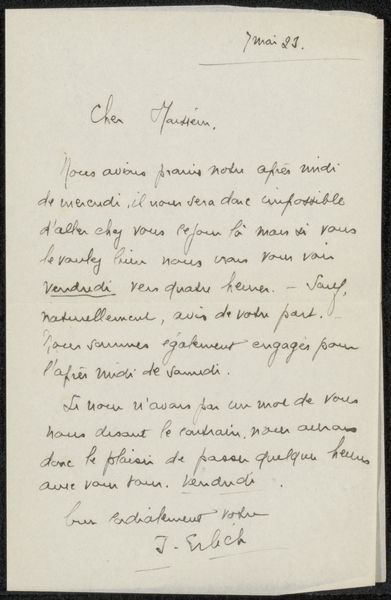
drawing, paper, ink
#
drawing
#
paper
#
ink
Copyright: Rijks Museum: Open Domain
Editor: This is "Brief aan Philip Zilcken," a drawing using ink on paper, potentially from between 1892 and 1897, by Félix Hilaire Buhot, held at the Rijksmuseum. It’s essentially a handwritten letter. What stands out to me is how informal and immediate it feels, despite being in a museum. What do you see in it? Curator: This piece offers a fascinating glimpse into the artistic networks of the late 19th century. Letters like this weren’t just personal correspondence; they played a crucial role in circulating ideas and materials among artists. Notice the address at the top, the mention of materials like Sienna earth – pigments that were fundamental to painting and printmaking at the time. The letter becomes a kind of material archive itself. How do you think this informality affects its perceived value as a museum object? Editor: It definitely makes it more relatable. Knowing artists dealt with material sourcing and shared tips like this connects them to everyday life, moving beyond the myth of the solitary genius. Curator: Exactly! The art world relies on these interconnected support structures. The reference to Robson’s in London highlights the global trade in art supplies that sustained artistic production. Museums often focus on finished artworks, but things like this underscore the economic and social systems necessary to their creation. Perhaps such networks provided social mobility and artistic enfranchisement? Editor: That's an interesting question – almost like looking at the supply chain of creativity. I hadn't considered it that way. I'm realizing that even seemingly personal documents like this can reveal larger truths about the art world. Curator: Indeed, they can offer powerful counter-narratives to established art historical accounts, highlighting the political and social forces shaping both the creation and the interpretation of art. Looking at the handwriting as well, its presence, or rather, the author's presence really shines through, in an unconventional manner. This shifts my perception, significantly.
Comments
No comments
Be the first to comment and join the conversation on the ultimate creative platform.
